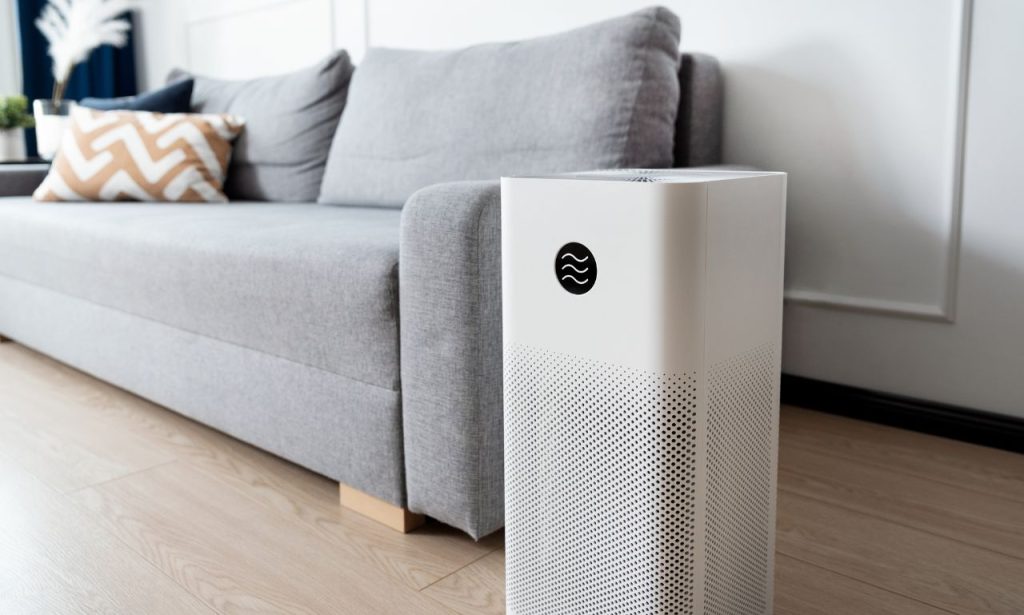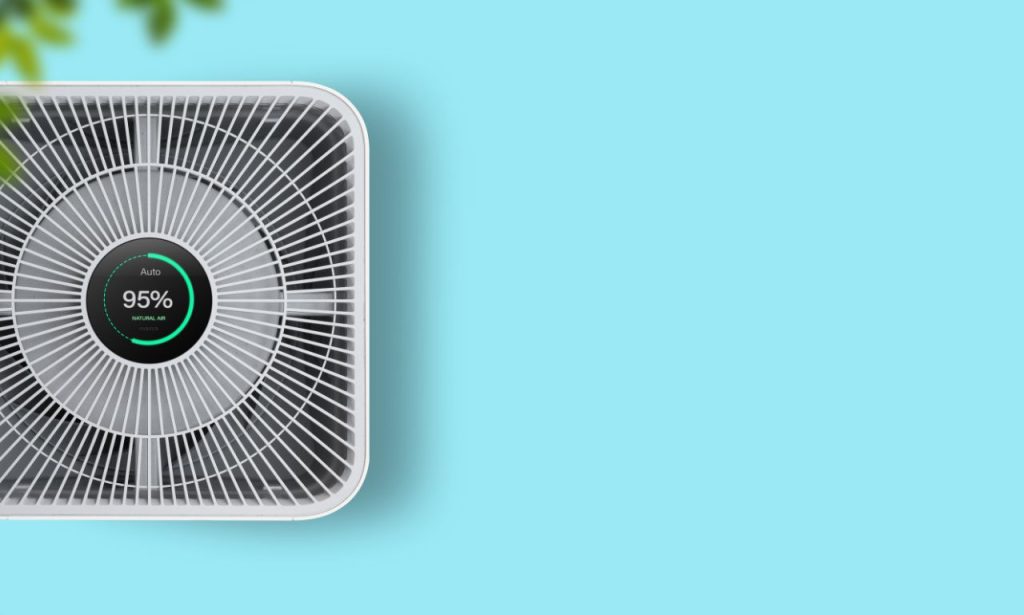When it comes to maintaining a healthy living environment, air quality is often overlooked. Yet, it plays a crucial role in your overall well-being. Whether you’re concerned about allergens, pollutants, or simply want to breathe easier, air purifiers can be a game-changer. But the question remains: how many air purifiers do you need in a house? This comprehensive guide will help you navigate through the various factors that determine the optimal number of air purifiers for your home, ensuring you make an informed decision.
Types Of Air Purifiers
Understanding the different types of air purifiers available on the market is the first step in determining how many you’ll need. Each type has its own strengths and weaknesses, making them suitable for different situations.
HEPA Filters

High-Efficiency Particulate Air (HEPA) filters are among the most popular air purifiers. They are designed to capture 99.97% of particles as small as 0.3 microns. This makes them highly effective against dust, pollen, mold, and other allergens.
- Pros: Highly efficient at removing airborne particles, long-lasting filters.
- Cons: Can be noisy, require regular maintenance.
Ionizing/Ozone Air Purifiers
Ionizing air purifiers release negatively charged ions that attach to airborne particles, causing them to fall out of the air. Ozone generators, on the other hand, produce ozone to neutralize pollutants.
- Pros: Effective at removing smaller particles, can eliminate odors.
- Cons: Ozone can be harmful in high concentrations, less effective against larger particles.
Filters Made Of Carbon Or Charcoal
Carbon or charcoal filters are excellent at removing odors, gasses, and volatile organic compounds (VOCs) from the air. They work by adsorbing pollutants onto the surface of the carbon or charcoal.
- Pros: Excellent for odor removal, can handle gasses and chemicals.
- Cons: Less effective against particulate matter, require frequent replacement.
PECO
Photo Electrochemical Oxidation (PECO) technology uses light to activate a catalyst, which then destroys pollutants at a molecular level. This method is effective against a wide range of pollutants, including some that other purifiers can’t handle.
- Pros: Destroys a broad range of pollutants, including bacteria and viruses.
- Cons: Can be expensive, slower to clean the air compared to other methods.
Determining the Number of Air Purifiers Needed
To determine how many air purifiers you need in a house, consider the following factors:
Practical Tips
Room Size
The size of the room plays a significant role in determining the number of air purifiers you need. Larger rooms will require more powerful air purifiers or multiple units to ensure effective air cleaning.
- Small Rooms (up to 200 sq. ft.): Typically, one air purifier should suffice.
- Medium Rooms (200-400 sq. ft.): You might need one larger unit or two smaller ones.
- Large Rooms (400+ sq. ft.): Multiple air purifiers or a single, high-capacity unit will be necessary.
| Room Size | Suggested Number of Air Purifiers |
| Up to 200 sq. ft. | 1 |
| 200-400 sq. ft. | 1-2 |
| 400+ sq. ft. | 2+ |
House Layout
The layout of your home can also influence how many air purifiers you need. Open floor plans may allow a single air purifier to cover multiple areas, while homes with many rooms or levels may require more units.
Open-Plan vs. Multiple Rooms
In an open-plan layout, air can circulate more freely, allowing a single, high-capacity air purifier to cover a larger area. In contrast, homes with multiple rooms or closed-off spaces will need individual units for each room.
- Open-Plan Homes: Fewer units needed, but they should be strategically placed.
- Multiple Rooms: More units required, with one in each frequently used room.
How to Optimize Air Purifier Usage
Once you’ve determined the number of air purifiers needed, it’s essential to optimize their usage to get the best results.
Air Quality Monitoring
Invest in air quality monitors to track the effectiveness of your air purifiers. These devices can provide real-time feedback and help you adjust the placement and settings of your air purifiers.
Clean the Air Purifier
Regular maintenance is crucial for keeping your air purifiers effective. Follow the manufacturer’s instructions for cleaning and replacing filters to ensure optimal performance.
Air Purifier Placement
Proper placement is key to maximizing the effectiveness of your air purifiers. Place them in areas where you spend the most time, such as bedrooms and living rooms, and ensure they have adequate space around them for air circulation.
Placement Strategies for Optimal Performance
Ideal Locations for Air Purifiers
For maximum efficiency, place air purifiers in rooms where you spend the most time, such as bedrooms, living rooms, and home offices. Position them near sources of pollutants, like near entryways or windows, to capture contaminants as soon as they enter your home. Also, consider placing air purifiers at breathing height (3-5 feet off the ground) to ensure they capture the air you inhale.
Avoiding Obstructions
Ensure that your air purifiers are not blocked by furniture, curtains, or walls. Obstructions can impede airflow, reducing the purifier’s effectiveness. Maintain at least a 2-3 feet clearance around the unit, especially the intake and outtake vents, to allow for proper air circulation.
Creating Airflow Pathways

To maximize the reach of your air purifiers, create pathways for air to flow freely throughout the room. Open doors between rooms to allow for better air circulation and consider using fans to help distribute clean air more evenly. Strategically placing multiple air purifiers can also enhance overall air quality by ensuring comprehensive coverage.
Air Purifier Features to Consider
Here are some important features to look for when selecting an air purifier for your home.
Fan Speeds and Noise Level
Fan speed affects how much air is being cleaned per minute. Faster speeds might mean a higher clean air delivery rate (CADR), but they can also increase noise level. If you’re sensitive to noise, check out models that have quiet air purifier features or multiple speed settings, including a lower, quieter setting for night.
Noise output can vary significantly between models. A sound level meter can help measure the noise output if you’re unsure. For bedrooms or living spaces, it’s important to consider a model with a low noise level setting for nighttime use.
Air Change Rate
This refers to how often the purifier can filter all the air in a given space in an hour. Higher air change rates are necessary for larger or heavily polluted rooms. It’s a great metric to determine maximum coverage and adequate coverage of a given model.
In rooms with high pollution levels, like those with pets or smokers, a higher air exchange rate will ensure faster and more efficient cleaning.
Filter Life and Maintenance
Maintaining your air purifier is critical for optimal performance. Replace filters as recommended by the manufacturer. Most HEPA filters need replacement every 6-12 months, while carbon filters may need to be replaced every 3-6 months, depending on usage.
Filter life varies based on usage and the type of filter. Many air purifiers have filter life indicators that alert you when it’s time for a change, ensuring your unit always runs at peak performance.
Energy Efficiency
Look for Energy Star rated models to ensure energy-efficient performance, which is key for managing electricity consumption and minimizing environmental impact.
Multi-Stage Filtration
Many air purifiers now come with 3-stage filtration systems, incorporating a pre-filter, HEPA filter, and carbon filter. This combination helps capture both large and small particles, including PM1 particles, odors, and even volatile organic compounds.
Practical Tips for Air Purifier Optimization
Place in High-Traffic Areas
High-traffic areas like living rooms or kitchens are ideal spots for air purifiers. High movement can stir up airborne pollutants like dust or pet dander, making these areas crucial for purification.
Kitchen areas are particularly important for air purifiers, especially during and after cooking. Cooking odors and smoke particles can linger, affecting indoor air quality. A carbon filter is particularly effective in these scenarios.
Run Continuously
Don’t switch off your air purifier unless it’s absolutely necessary. To keep air quality consistently good, run your units in auto mode where they adjust power as needed, or at least leave them running at lower settings during times you aren’t actively using the room.
Running your air purifier continuously ensures it can respond to changes in indoor air pollution, such as when cooking, cleaning, or during higher outdoor pollution levels.
Use Pre-Filters for Longer Filter Life
If your purifier comes with a pre-filter, this is a game-changer for extending the life of HEPA or carbon filters. Pre-filters trap larger particles like pet hair, making the more expensive filters last longer.
Pre-filters can usually be washed or vacuumed, which helps reduce the overall maintenance cost and prolongs the life of your main filters.
Whole-House Air Purifier Options
For those with larger homes, a whole-home air purifier might be a great investment. This system integrates with your HVAC system to purify the air throughout your entire house—especially ideal for larger homes with multiple levels.
- Pros: Comprehensive coverage; reduces the need for separate units in every room.
- Cons: More expensive upfront, requires professional installation, but can ultimately lead to better, consistent indoor air quality.
Whole-house air purifiers are particularly effective in residential spaces where air quality challenges are frequent, such as homes near high-traffic roads or areas with significant outdoor pollution.
Conclusion
Determining how many air purifiers you need in a house involves considering various factors, including room size, house layout, and the specific needs of your household. By understanding the different types of air purifiers and following practical tips for their usage, you can ensure your home is a healthy and comfortable environment.
ALSO READ: Is Fuel Induction Service Worth It?
FAQs
The maintenance requirements vary depending on the type of air purifier. Generally, HEPA filters need to be replaced every 6-12 months, while carbon filters may need replacement every 3-6 months. Always refer to the manufacturer’s guidelines for specific maintenance schedules.
Yes, HEPA filters are particularly effective at removing pet dander from the air. If you have pets, consider air purifiers specifically designed to handle pet-related allergens.
Air quality monitors can provide real-time data on the effectiveness of your air purifier. Additionally, many air purifiers have indicator lights that show when the filter needs to be replaced.
Yes, some air purifiers are designed to target specific allergens. For example, units with HEPA filters are excellent for pollen and dust, while those with carbon filters can handle chemical pollutants and odors.
Yes, air purifiers can be used in kitchens to remove cooking odors, smoke, and other pollutants. Models with carbon filters are particularly effective in this environment.




